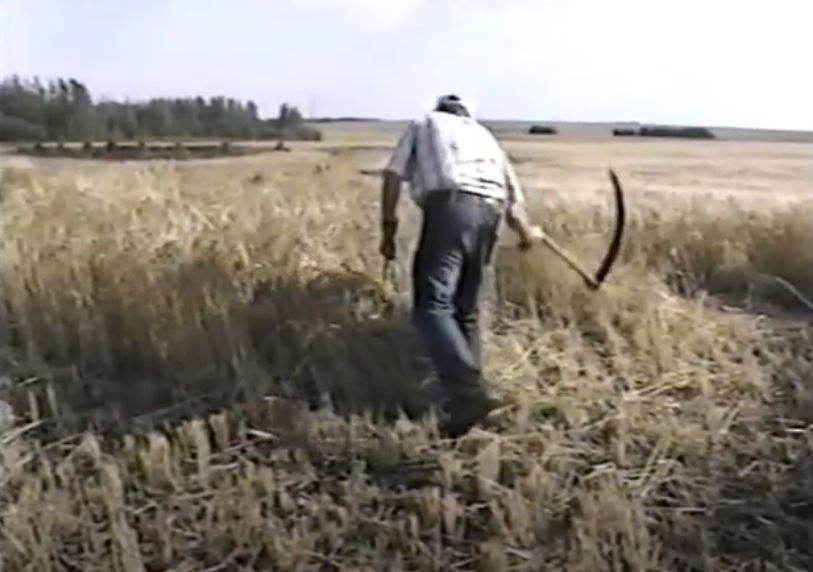Image: A film still showing a demonstration of harvesting with hand implements (SPRA 0001.10.02.02, Fonds 001: Pioneer Museum Society of Grande Prairie & District fonds)
Movie Monday highlights videos from the Archives’ film collection. Every week, an archival film will be featured on our YouTube channel and here on our blog. The Movie Monday project is made possible with the generous funding support of Swan City Rotary Club of Grande Prairie.
Today’s featured video was created in 1996 by Harry Lehners and Steve Evanchuk with the purpose of demonstrating how harvesting was done by hand before the introduction of machines. As Mr. Lehners says in the video, harvesting machines brought about “the end of an era”.
Most early settlers in Alberta were of European descent, and those who had been farmers in their homelands brought along their native tools. In this video, we see tools from countries such as Germany, the Netherlands, and Austria. Harry explains the differences between these European tools and their American counterparts, and also describes the variations of tools used for different types of crops.
With the implements shown in this video, approximately one acre of grain could be cut in a day, and two acres could be tied in the same amount of time. Often, two men would operate scythes while a woman would follow behind, tying the felled grain in bundles. Harry shares an extraordinary story of a woman near Bear Lake who, in the 1910’s, cut four acres by hand while her husband was working with a threshing crew in southern Alberta. When her husband returned, he threshed the grain she had cut “and then he sold it in Clairmont for No. 1 Northern. Farming most certainly was – and still is – a team effort.
